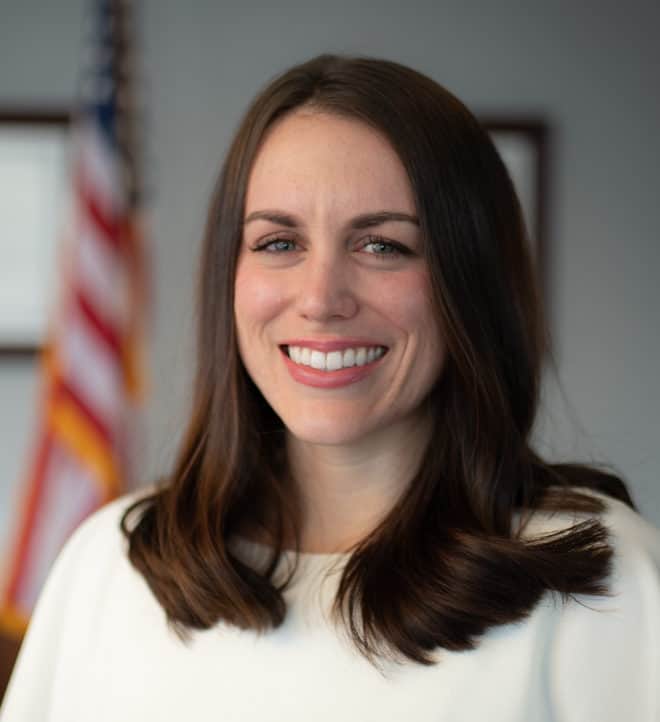
Written by Christine Cooke Fairbanks
February 6, 2018
Education choice is a principle, not a specific policy. And more people agree with this concept than you might think.
At its core, education choice is the idea that we should give each student whatever educational options they need to help them learn as individuals – the best that public or private education has to offer.
Utah can find broad support for “education choice” when the term is fully understood.
Panelists at “Innovations for Growing Education Choice,” a policy panel Sutherland Institute hosted last Wednesday during National School Choice Week, shared innovative ideas that give students options – policies that ought to spread throughout Utah.
Kathy Visser, mother and recipient of the Arizona Empowerment Scholarship Account (ESA) Program, spoke about her battle and eventual success in finding the education that fit her son’s special needs – including a range of challenges stemming from autism. Arizona’s ESA program allows parents to purchase a variety of educational services or programs. Visser uses Jordan’s funds on science classes, horse therapy, community physical education classes, and more. Today, Jordan is thriving – something Visser could not have said a few years ago.
Prior to finding Arizona’s ESA, Visser spent $17,000 on a lawyer to fight for the “free and appropriate education” Jordan was entitled to by federal law in his public school. Visser told the panel’s audience last week that she now believes a “free and appropriate education is only available to those who can actually afford it.” Fortunately for her, Arizona offers parents flexibility with state funds with the ESA program. Utah law does not yet have this type of flexible state-funded program for students with special needs – but it should.
Panelist Kimberlee Carlile, director of Industry and Talent Initiatives for the Utah Governor’s Office of Economic Development, spoke about our state’s growing career pathway programs – partnerships between districts and industries that give students the opportunity to launch from high school into meaningful careers where skills gaps currently exist. Utah has made great headway in creating these opportunities, especially in the areas of aerospace manufacturing, diesel technology and medical innovation.
Utah’s career pathways program is a significant part of education choice. This innovative approach to education is changing a one-size-fits-all culture with regard to post-secondary life. As a society, we’ve done a good job of selling high school students on the benefits of a traditional four-year college model, but we haven’t done as good a job of showing them their full range of options. Not all students have the same interests or talents, and we shouldn’t recommend all students pursue the same post-secondary path. Luckily, career pathways are not an either/or scenario. Many pathways from high school to industry careers incentivize students to earn credentials that can convert into a college degree later. We should continue to provide students a range of post-secondary options while they’re in high school – honoring the fact that there are many different forms of learning.
Kenneth Grover, principal at Innovations Early College High School, spoke on the panel about empowering students through competency-based education – flexibility in the time, pace and place of learning – really, a type of “micro-choice” for students. Innovations Early College High School is a model of competency-based education across the nation, and it receives visitors every year who are interested in seeing it in action. Competency-based education can look different at different schools, but at its heart it’s a philosophy about freeing students through autonomy in learning rather than binding them to arbitrary structures like seat time or attendance.
Grover said he regularly asks students three questions: What do they like about school, what do they not like, and what would they create? Empowering students to navigate and control their education gives them education choice. Utah has set up an exploratory pilot program that a number of LEAs have taken advantage of. We should continue to question arbitrary educational boundaries that limit how a student can learn.
Another panelist, Matt Bowman, is the founder and CEO of My Tech High, an innovative, online public school program offered through Provo and Tooele school districts. My Tech High focuses on entrepreneurship and innovation, giving parents the opportunity to customize education for their children through individual classes and hands-on opportunities.
Bowman’s program is an option for parents at district schools, and he believes we need to do a better job of innovating within our current public school system. He said, “The ecosystem of learning is bigger than a brick and mortar school.”
That’s a vision almost all educators understand … even if they don’t call it education choice.
But they should. Education choice is simply a principle about giving students whatever they need to learn. It’s a principle that Utahns should not be afraid to advocate for in the future.
More Insights
Read More
What you need to know about the upcoming state party conventions
The two major political parties are about to hold their state conventions. Here’s what you need to know.
Here’s why the First Amendment’s religion clauses are not in conflict
Some suggest there is a tension between protection for the free exercise of religion and the prohibition on the establishment of religion. But a better take is to see the two clauses as congruent.
Is California’s minimum wage hike a mistake?
Is raising the minimum wage a good tool to help low-income workers achieve upward mobility? That’s the key question at the heart of the debate over California’s new $20 an hour minimum wage law for fast food workers.


